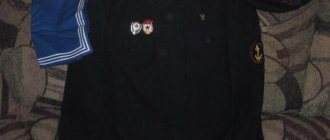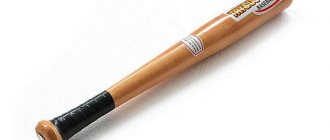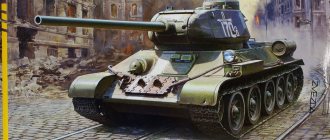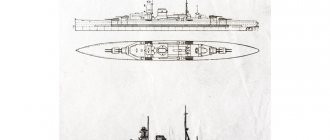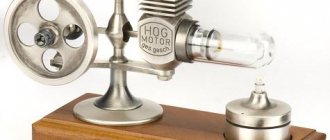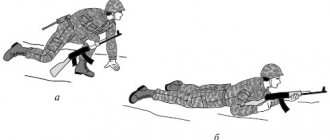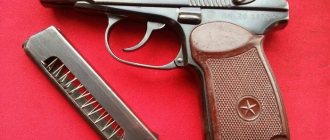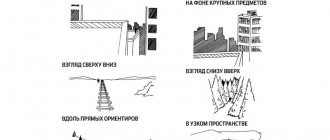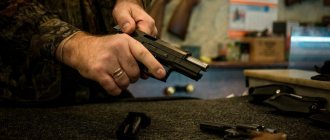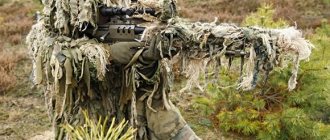Since ancient times, ships have been used to transport people and goods across seas and oceans. Even in the modern world, with the presence of aviation and astronautics, ships, as before, remain the most important means of transport for passenger transportation and maintaining trade. In addition to cargo and passenger ships, warships have always been needed to ensure the security of maritime trade routes. Since the times of Ancient Egypt, Ancient Greece and Ancient Rome, entire empires have been created and destroyed by the power of the navy. This article describes the most significant stages in the development of shipbuilding since ancient times. Since many types of ships have been improved over time, in order to show the diversity of the same type of ship, we in many cases present several types of it.
For centuries, flags have been flown on ships to indicate their ownership and to convey messages to other ships. Each flag has its own meaning.
From 2500 BC before 1500 AD e. ships were propelled by oars and sails. From 1630 to 1850, the most powerful warship was a three-decker wooden sailing ship with 100 or more guns on board.
Crew of an 18th century warship. consisted of 850 officers and sailors. Positions at that time: captain, lieutenant, midshipman, sailor, gunner, gunpowder boy. The crew of a modern passenger ship consists of people of various professions: navigators, computer operators, engine mechanics and, of course, good cooks! Positions in our time: captain, nurse, navigator, mechanic, radio operator, cook.
Modern passenger liners have comfortable cabins, cinemas, restaurants, swimming pools and playgrounds for children. Safety measures are of great importance on them. In earlier times, sailing on ships was very dangerous. Only after death in 1912 as a result of a collision with the iceberg of the super-liner Titanic, on board which carried about one and a half thousand crew members and passengers, the presence of life jackets for all people on the ship became mandatory.
How the ship works
The bilge of a ship displaces a mass of water equal to its own mass. Trying to return to its place, the displaced water pushes the ship upward.
The blades of a ship's propeller, set at an angle, rotate and create a force that pushes the propeller and, accordingly, the ship forward. Some modern high-speed ferries use water jet propulsion; seawater is sucked into it and then released in a high-speed jet.
The rudder, hinged at the stern of the vessel, is connected to the wheel or tiller. If the helmsman moves the tiller to the left, the rudder and stern move to the right. If it is necessary to make a turn to the right, he moves the tiller to the left.
In the era of sailing ships, a sail setup was developed that made it possible to move against the wind. By making turns in different directions (tacking), the ship moved forward, even when there was no tailwind.
Vikings
The warlike Vikings were very good sailors; according to legends that have a real basis, they were the first to reach the shores of America.
Here the fleet was represented by the following vessels:
- Traders, who were called knorrs. It accommodated about 40 people.
- Combat drakkars, which carried 30-70 warriors. They reached up to 30 meters in length, were fast and had high maneuverability,
Pictures on the Internet quite accurately convey the appearance of Viking boats: austere, large and durable.
History of shipbuilding and use of ships
Over the centuries, ships have repeatedly changed the fate of nations. On them, people went on long voyages in search of new lands, new life, new markets. Simultaneously with the development of merchant ships, warships were also improved, serving to protect trade routes and repel attacks by enemy fleets. Even in our era of space exploration, almost 5,000 years after the appearance of the first known ships, ships carry the heaviest loads and create the most comfortable conditions for long journeys.
Ship creators were constantly looking for ways to improve ships. In the time that has passed from single-sail ships to liners with diesel engines, ships have become much safer, more comfortable and faster.
Ships are used in various fields of human activity: trade, warfare, movement of people, scientific research, tourism and recreation, rescue operations, fishing and even agriculture.
There are various types of ships for transporting people across seas and oceans. Ferries, hovercraft and hydrofoils allow passengers to quickly cross seas with their vehicles on board. At the end of the 19th century, passenger liners began to be built - one of the most comfortable types of transport. Now, of course, they are inferior in speed and cost of travel to airplanes, but such ocean liners are successfully used for cruises and recreation.
Ships are vital to the ability of any state to conduct trade, import or export various cargoes. Merchant ships include tankers capable of carrying crude oil and container ships delivering solid cargo. Ships are also used to extract marine resources.
Warships can be used as bases for troops and weapons. For example, an aircraft carrier is a fully equipped air base. Warships are also used to carry out attacks against enemy targets. For example, ships such as the French destroyer Tourville carry guided missiles on board.
Each country bordered by the sea has its own rescue service, and its most important part is rescue ships. Rescue boats are launched along an inclined slipway from a rescue station on the seashore. To determine the location of the ship's wreck, a radar is installed on it.
Development of sails
In ancient Egypt, so-called “round” ships were propelled by a single square sail. This was the only type of sail used until the Middle Ages, when merchants adopted the sail design used on Chinese junks and Arabian dhows. By the 17th century the ships were already equipped with several masts and many sails.
Housing design
For over 5,000 years, ship hulls have been built from wood. At first, people hollowed out whole tree trunks. Then wooden boards began to be used, which were joined together overlapping (clinker), and even later they began to be joined end-to-end (caravel). During the Industrial Revolution, iron and steel were used for these purposes. Today, ships are built from materials such as glass-reinforced plastic.
Navigation instruments
The first navigational aids determined a ship's course and its position north or south of the equator by measuring the angle between the Sun or stars and the ship. Examples of such devices are the astrolabe and sextant. Nowadays, electronic devices, computers and satellite technologies are used for these purposes.
Driving force
In the 19th century The use of steam power freed ships from dependence on wind, tides and currents. First, ships with side paddle wheels appeared. In the middle of the century they began to be replaced by more efficient ships with a stern propeller. At first, steam engines were used to drive the paddle wheels and propellers, like the first steamship. The most modern type of engine is the high-speed water jet propulsion.
Ships through the ages
The most dramatic changes in the design of both merchant and warships have occurred over the past 200 years. From the 3rd millennium BC. until the beginning of the 19th century. AD ships were propelled only by oars and sails
3000 BC: The first known ship is an ancient Egyptian reed ship.
1180 BC The first known warship was an ancient Egyptian war galley.
150 AD: Ancient Roman merchant ship - used for trade voyages within the empire.
850 AD: Viking longship - introduction of the clinker hull.
1490: Spanish caravel - the appearance of a caravel-type hull with three masts.
1570-1620: creation of a galleon with onboard artillery, which became the leading warship.
1802: The Scottish ship Charlotte Dundas became the first steamship in operation.
1859: creation of ironclads - the Monitor (built in 1862) was equipped with rotating armored turrets for the first time.
1897: The British ship HMS Turbinia became the first ship to be powered by a gas turbine engine.
1906: The warship Dreadnought had a completely new design that allowed it to carry 10 heavy guns.
1923: The first aircraft carriers enter service, the British Hermes being one of them.
1920-1930: creation of comfortable liners, the largest of which was the Queen Mary (built in 1934).
1960: creation of warships with guided missiles on board.
1990: The hovercraft Great Britain is the largest multihull fast ferry in the world.
Fishing fleet
During the Soviet Union, it was in our country that the world's first fishing fleet was created.
Soon the fishing industry began to flourish in the country, which was facilitated by total technical re-equipment. In particular, the Sea of Okhotsk and the Barents Sea have begun to actively develop.
If in 1950 the total catch was about 1.5 million tons per year, then by 1970 it had grown to almost 7.5 million tons.
In the 80s, the USSR produced 14 million tons of fish, and seafood exports amounted to $4.5 billion. After the collapse of the Soviet Union, the industry was in decline. Only recently can we observe some recovery, which is not yet proceeding at the most active pace. In 2022, for the first time since the USSR, it was possible to reach a catch volume of 5 million tons of fish per year.
Ships of Ancient Egypt
“I ordered the creation of a strong wall of warships and galleys at the mouth of the Nile... a net was prepared for the enemy, capable of swallowing him.”
Pharaoh Ramesses III. The inscription on the monument in honor of the victory at Medinat Habu.
Ancient Egypt was the world's leading maritime power, possessing cargo ships for trade and warships for war. The first Egyptian sailing ships were built from papyrus reeds, but by 2500 BC. In Egypt, elegant river boats and ships made of cedar, a tree imported from Lebanon, appeared. The oldest ship discovered is the funeral bark of Pharaoh Cheops, the creator of the Great Pyramid, built from cedar. Defending himself against the attacks of the “people of the sea” with the help of a fleet of war galleys, Pharaoh Ramesses III won in 1180 BC. victory in the first known naval battle in history. Drawings depicting scenes of the battle on the walls of the temple of Ramesses III at Medinat Habu prove that it was won not only by ramming attacks, but also by hand-to-hand combat during the boarding and capture of enemy ships. This tactic of naval combat remained the main one over the next 3000 years, until in the 19th century. Long-range guns and explosive shells were no longer used.
Papyrus reed, which grew along the Nile, was the basis for paper production in Ancient Egypt. But dense bundles of reeds tied together were also used to build the first seagoing sailing ships. Such ships were created over 5000 years ago.
Both on land and at sea, the main weapons of the Egyptians were bows and arrows for shooting at a distance, spears, clubs, maces, swords and light hatchets made of bronze. The ram was a protruding extension of the ship's keel, which usually had a heavy bronze tip in the shape of an animal's head.
Egyptian shipbuilders created ship hulls by fastening short planks together with wooden pegs. Transverse beams were fixed between the sides of the hulls. Deck boards were laid on them, and sailors, along with squads of archers, lived and worked on such a deck. The joints (seams) of the outer boards were caulked and made waterproof by plugging oil-soaked papyrus reed stalks.
It was not until more than 1,300 years after the funeral bark of Pharaoh Cheops was carefully dismantled and buried with him for use in the afterlife that the Egyptians won their first victory in a battle at sea. The memorial temple of Ramesses III at Medinat Habu contains drawings depicting this battle in detail. They show how the Egyptians defeat the fleet of the “people of the sea.” The battle took place at the mouth of the Nile River. The Egyptians managed to win it by ramming and sinking several enemy ships and boarding the rest.
Ancient Rome and Byzantium
Rome and Byzantium were powerful powers that were famous for their luxurious ships. They went on long journeys and successfully covered long distances.
The main innovation of this time was the so-called Roman galleys and Byzantine dromons. Their design used not only wood, but also metal and fabric, copper elements that were not subject to corrosion from interaction with water.
The ships had several floors and a whole army of oarsmen, who had to wield huge oars weighing hundreds of kilograms. Their construction was not carried out intuitively, but using many sciences and specific applied knowledge.
Ancient Greek ships
“In the stormy sea, they could not remove the messenger, and because of this it was even more difficult for the helmsmen to control the ships. The Athenians attacked, sank one of the admiral's ships, and then proceeded to destroy all ships they encountered along the way."
Tacitus. History of the Peloponnesian War.
The ancient Greeks improved their war galleys and created their triremes, which means “three oars.” During the period of weakening of Egypt and its subsequent capture by Persia in 525 BC. The Phoenicians became the new major naval power. They created biremes, on which two rows of oars were installed on each side instead of the one row used by the Egyptians. By 500 B.C. the Greeks added a third row of oars to these ships and created a faster, formidable navy. Triremes went out on patrol trips to the sea under sail and patrolled for several hundred kilometers until they discovered the enemy. At this moment, the masts and sails were lowered, and the oarsmen took over, directing the trireme to ram the enemy ship with the goal of sinking it. In 480 BC. The trireme fleet of Athens and Sparta successfully repelled the Persian attack on Greece. Over 200 Persian ships were sunk in the battles, while the Greeks lost less than 40 ships. Later, during the Peloponnesian War between Athens and Sparta (431-404 BC), many naval battles took place between trireme fleets. The final victory at sea was won by the Spartan triremes.
A gracefully curved stem rose above the bronze-tipped ram. The “all-seeing eye” was painted on the bow - one of the oldest symbols of good luck in the history of navigation. It was believed that it guided the ship along the right path and brought it safely back to the harbor. Such an “eye” appears in drawings of ancient Egyptian ships (2400 BC). And nowadays it is applied to fishing vessels in many countries.
The triremes carried heavily armed infantrymen called hoplites. Armed with spears and swords, they could fight both on land and on warships at sea.
The captain of the trireme, called the trierarch, commanded the ship from his place at the stern. Next to him were the warriors and commanders, and in front of him was the helmsman. The captain constantly ensured that the rowers had enough strength to increase speed during the ramming attack.
For centuries, scientists have debated how trireme rowing was actually organized. And only after creating a copy of the trireme in the 80s. XX century and her computer modeling solved this mystery. The trireme was propelled by 170 oarsmen, 85 on each side. The 31 tranita oars on the top row did not come into contact with the oars of the two lower rows, since they rested on outriggers (outriggers) along the sides of the vessel. Under them were 27 zygites of the middle row and 27 thalamites of the lower row.
Rowing a trireme required good skill. The ends of the oars were only 30 centimeters from each other, and the difficulty of this work was that only the rowers of the top row could see the water.
Aircraft carriers defeat battleships
During naval maneuvers in the 1930s. The world's largest American aircraft carriers, Lexington and Saratoga, were practicing reconnaissance missions, although their air groups included torpedo bombers and dive bombers. They decided to use the aircraft carriers as raiders - fighters of enemy merchant ships, ignoring the old truth: a ship that combines two functions cannot cope with either of them. American, Japanese and German aircraft carriers were supposed to use carrier-based aircraft to search for victims and sink them with fire from large-caliber guns. The Second World War proved the impracticability of this task.
The defeat of the American fleet at Pearl Harbor
Despite the low quality of British carrier-based aviation, it was she who was responsible for the first successful attack on enemy ships at the base: in 1939, obsolete biplane torpedo bombers from British aircraft carriers sank or damaged four Italian battleships stationed at the Taranto naval base. Japan used the experience of this operation.
On December 7, 1941, dozens of Japanese torpedo bombers, dive bombers and fighters from the carrier strike force of Admiral T. Nagumo appeared over the American naval base of Pearl Harbor in the Hawaiian Islands, where the US Pacific battle fleet - eight powerful battleships - was stationed. In less than an hour, this armada was defeated: one battleship went up in the air when a bomb hit the powder magazine, one turned over and lay on its side, the rest were sunk in shallow water. During attacks on ships, fighters from the Japanese escort rushed over American airfields, shooting at planes that did not have time to take off. This victory came at the cost of the loss of fifty Japanese aircraft. Thus, the aircraft carrier proved its combat value as a strike unit.
"Yamato" - the most powerful battleship in the world
The first naval battle in history began on June 4, 1942, during which the ships of the opposing sides never saw each other. The Japanese elite formation of aircraft carriers advanced to the Midway Atoll in the Pacific Ocean. The aircraft carriers were followed by escort ships , including the most powerful battleship in the world, Yamato, and transports with landing troops. The formidable armada was opposed by three American aircraft carriers. It seemed that luck favored the Japanese: heavy American bombers, throwing bombs from great heights, did not harm their squadron. But a squadron of American torpedo bombers was shot down on approach to the target. Then the incredible happened: American dive bombers jumped out of the clouds, while on the decks of Japanese aircraft carriers planes were preparing to take off, and three ships turned into floating fires. The Americans, having assembled a combined group, struck the fourth Japanese aircraft carrier. During the Battle of Midway, the Japanese fleet lost both the backbone of its aircraft carrier forces and its best pilots.
Ancient Roman ships
“The ship's crew was like an army. I was told that this ship could contain enough grain to feed all the inhabitants of Athens for a whole year. And all this wealth of the ship is in the hands of one small old man, who controls the huge rudders with a tiller no thicker than an ordinary stick.” — Lucian
The Greek writer Lucian wrote these words in 150 BC. He described an ancient Roman merchant ship docked in the port of Athens, which at that time was part of the Roman Empire. Such ships were durable and well suited for sea voyages. They carried various cargoes, and the largest of them had passenger cabins at the stern that could accommodate more than 250 people. They were mostly prisoners or slaves, shackled and connected by chains. Since these ships rarely sailed during the stormy winter months, the crew usually slept on deck.
At the stern of ancient Roman merchant ships there was a high curved sternpost, which was crowned with the graceful head of a swan or goose. As on similar ships of later centuries, this decoration was painted and gilded.
The Roman Empire depended heavily on maritime trade. Merchant fleets sailed in the Mediterranean, along the Atlantic coasts of Spain and France, and across the English Channel.
Often, huge numbers of rats accumulated in the cargo holds of ancient Roman ships transporting grain. They were carriers of the plague and contributed to the spread of this disease. So, in 166 AD. An epidemic of plague brought from the Middle East began in the Roman Empire.
Food was delivered to Rome and other cities by sea. Egypt was the most important supplier of corn for the Roman Empire. Grain was transported in bags, and olive oil in clay amphorae.
Successful merchants and bankers were the richest people in the Roman Empire. Many of them earned fortunes delivering cargo vital to the empire. They lived in luxury and had enormous power, as even emperors were forced to borrow money from them. Some wealthy merchants became Roman emperors, using their wealth to gain support from the empire's warriors.
Wild animals such as panthers and lions were brought from Africa and the Middle East to the major cities of the empire. They were transported to amphitheaters to participate in entertaining battles. At the ports, cages with wild animals were unloaded by slaves.
2nd century merchant ship AD was 55 meters long, 14 meters wide and 13 meters high from keel to deck. The swan's head symbolized the Egyptian goddess Isis, the protector of sailors, and often decorated ships. The ship was propelled by a large square sail.
Mediterranean ship of the 8th-9th century
When the Vikings began sailing into the Mediterranean in the years 700-800, they discovered that local ships did not use rectangular sails with battens, replacing them with beveled, triangular options. At that time, the northerners began to call such ships Latin, like everything that belonged to the southern half of Europe. No one can say who exactly created the sail of this shape, but it is believed that they were first used in Greece and the Roman Empire. Its convenience lay in increased maneuverability, which was of great importance when sailing among small islands, of which there are many in this area. In addition, the oblique sail provided sufficient speed when using side winds.
Here is a picture of a coaster used in the 800s. It has a cut stem, and on the deck there is only one mast, inclined towards the stem. 2 oars were used for control.
Hanseatic Kogi
“Being experienced sailors and excellent marksmen, the French quickly prepared their ships and launched into the vanguard the cog Christopher, captured by them from the British in the same year, with a large detachment of Genoese crossbowmen on board, who were supposed to protect the ship and not give rest to the British.”
Jean Froissart. Chronicles. 1340
Around 1250, a new type of vessel appeared in Europe. It was called "kog", although it had much in common with previously built ships. Like the Viking longship, the koga had a clinker-type hull, a single mast and a square sail. But there were also significant differences. The Koga had a straight keel, a cargo hold below deck and an articulated rudder.
These ships were used in the major cities of Northern Germany, which were part of the trading association known as the Hanseatic League. As a result, their ships were often called Hanseatic Kogs. These ships transported European goods until the beginning of the 15th century. During wars they also carried troops, and their two “castles” served as combat platforms for archers and crossbowmen.
The koga helmsman steered the ship using a tiller - a wooden beam attached to the upper part of the steering wheel. This method was much more effective than steering a steering oar, and represented significant progress in the design of ships.
In 1330, English long-range archers secured victory at the Battle of Slyze, a famous naval battle with the French fleet. They fired "clouds of deadly arrows" from "castles" on the stern and bow of the cogs, filled with soldiers.
During the battle at sea, the slow-moving kogi did not ram. Instead, they tried to bring the Cog closer to the enemy ship, firing at its decks with bows and crossbows. The soldiers then boarded the enemy ship and captured it after hand-to-hand combat. Sometimes soldiers threw clouds of quicklime into the wind, thus blinding the enemy - a barbaric but effective tactic. “Battles at sea are always more brutal than on land, since retreat and flight are impossible here,” wrote Jean Froissart in the 14th century. “Every man must risk his life and hope for success by relying on his own courage and skill.”
The koga's massive cargo decks allowed the installation of at least one windlass - a winch or winch - to lift heavy loads. It was usually installed on the poop deck or on the main deck. The windlass consisted of a cylindrical drum with ropes wound around it. It was used to lift heavy yards or masts on which sails were attached, as well as to load and unload the hold.
Etruscan ship 4th century BC
An ancient temple from 400 BC was found in the center of Italy. Several tombstones with drawings depicting Etruscan ships were discovered there. In their shape, they were very similar to Phoenician ships, but there was a key difference, which was the strong bend of the stems. Similar to Viking ships, the oars were pierced directly into the side, which allowed the rowers to be closer to the water and more efficiently perform their function. People were protected, again, by the sides. The oar holes were equipped with a leather sleeve, which reduced the negative effect of friction. To change direction, an oar was used, equipped with a transverse tiller, which was installed on the back of the hull on the right side. The mast was in the center, and a rectangular sail and one yard were attached to it. A pattern depicting a sea wave was applied to the upper belt of the skin, and on the body it resembled leaves. The sternpost was protected from both directions by battle shields, and ended with the image of a fish tail. Similar protection was used on the top of the stem. In the front part of the ship there was an opening that resembled a ram's head and served as protection from an enemy ram. The ram itself was made of metal and was located close to the water line. Etruscan ships were quite wide and had high sides, which allowed them to comfortably navigate the expanses of the Mediterranean Sea.
17th century warships
“Our situation is deplorable. Our ship is badly damaged, winter is approaching, food supplies are running out and spoiling, the sailors are getting sick from stale water and food that has been cooked in salt water for two months.”
Report from Admiral Robert Blake to Oliver Cromwell. August 1655
From 1570 to 1620, the galleon became the most powerful type of warship in the world. It was armed with batteries of guns mounted for broadside fire through ports cut into the sides of the ship. Over the next 50 years, the galleon evolved into a two- and three-decker warship carrying 100 or more guns, displacing over 2,000 tons, and crewed by over 800 sailors and soldiers. These large and beautiful ships were real works of art, sparkling with gilding and bright colors. However, as can be seen from the above report, life on board such a vessel was very harsh.
The commander had complete authority on the ship, but he often relied on the skipper, a more experienced and trained sailor, to command the sailors. There were also gunners, soldiers and craftsmen on board the ship. The cabin boy had to keep the galleon clean.
When the galleon approached an enemy ship, deadly fire was opened on its decks with large grapeshot from light rotating guns mounted on rails. Earlier galleons carried squads of archers. Although they mainly fought on land, if necessary they could also defend their ship.
A ship's advantage in battle depended on how quickly its guns could be reloaded and fired. After each shot, the barrel of the gun had to be cleaned of smoldering residues with a damp bannik, the gun had to be loaded with gunpowder and cannonballs, and rolled forward. The heaviest guns were served by teams of 10 or more gunners.
At the junctions of the match sections, round platforms called “tops” were installed, which made it easier for sailors to work at height. They also served as posts for lookouts and snipers.
The helmsman controlled the ship using a handle - a handgun. Since the handgun was below the deck, the helmsman could not see where the ship was heading. He had to follow the commands of the deck officer, which were shouted to him through the hatch. Having received an order from the commander to change course, the helmsman pushed the gun to the side, the rudder deflected, and the ship made a turn.
The king's large flagship type ship, the Cronan, was built to demonstrate the wealth and power of the king and state. The outside, even around the gun ports, was richly carved. The English galleon "Master of the Seas", launched in 1637, was covered with so many gold plates that its enemies called it the "golden devil". However, if well cared for, they lasted longer than modern warships.
The flags showed which country the ship belonged to and who commanded it. Since 1650, flags began to be used to convey messages to other ships of the same fleet.
Links[edit]
Footnotes [edit]
- ^ ab "United Nations Convention on the Law of the Sea. Part II, subsection C". United Nations
. Retrieved June 28, 2015. - Winfield, Reef; Roberts, Stephen S. (2017-10-30). French Warships in the Age of Sail 1626–1786. Pen & Sword Books Limited. ISBN 9781473893535.
- Jump up
↑ Bacon 1901, p. 246. - Dahl 2001, p. 51.
- Anon. 1904b, p. 27.
- Jump up
↑ Lyon 2005, p. 80. - Jump up
↑ Lyon 2005, p. 97. - Jump up
↑ Siegel 2002, p. 181. - Jump up ↑ Armi da Guerra
, De Agostini, Novara, 1985.
Steamships
“It may seem that the constant progress resulting from the combination of iron and steam was an unlimited progress. However, the example of the Great Eastern steamship reminds us that everything has to be paid for.”
Anthony Burton. The rise and fall of British shipbuilding.
By the 30s. XIX century Steam engines began to be installed on sailing ships to enhance their power for ocean voyages, but they were capable of burning only a small amount of coal on board. British engineer Isambard Kingdom Branell, who designed the Great Western (1837) and Great Britain (1843) steamships, set about creating an even larger metal steamship. This was the Great Eastern, which was capable of taking on board enough coal to sail to India and Australia. It was launched in 1858.
Equipped with sails, paddle wheels and a stern propeller, this gigantic steamship was capable of carrying 4,000 passengers and 6,000 tons of cargo. Until the 90s. XIX century It was the largest ship in the world, but had a lot of shortcomings and turned out to be unsuitable for passenger transportation. Although the Great Eastern successfully laid the first telegraph cable across the Atlantic in 1866, it was scrapped in 1888.
The Great Eastern steamship had two huge paddle wheels, each 17 meters in diameter. They added almost 11 meters to the total width of the vessel and, when sailing, became powerful brakes that sharply reduced its speed.
Each of the Great Eastern's enormous paddlewheels was powered by a large two-cylinder engine. Vibrating cylinders drove paddle wheels through crankshafts, which moved in a large circle. Together with the massive piston and connecting rod, each cylinder weighed almost 30 tons. This whole huge engine with its out of control spinning cranks and clutches proved cumbersome, dangerous and excessively noisy from the start.
The massive four-blade propeller at the stern was 7 meters wide and weighed over 36 tons. It was driven by a four-cylinder engine located in a separate engine compartment. Each of the cylinders, if necessary, could work independently of the others.
The only ship in the world capable of carrying enough cable (4022 km, weight 4673 tons) to be laid on the seabed across the Atlantic from Ireland to Newfoundland was the Great Eastern. This task was completed in July 1866.
Dutch flute 16th century
The first such ship appeared in 1595 in Holland, more precisely in the city of Hoorn, considered the central shipyard. The creators decided to use a length to width ratio of 4:1 or 6:1. This was necessary to make it possible to move at an acute angle to the wind. Topmasts were first used here, although they themselves appeared back in 1570. The mast used was very high, several meters longer than the overall hull length. In contrast to this, it was decided to use small yards. This made it possible to use small, wide sails, which were very easy to maintain, and therefore the crew could consist of fewer people. Rectangular sails were used on the foremast and mainmast, to which topsails were also attached. Kruysel was supported by the mizzenmast. The bowsprit was equipped with a blind, and in some cases a bomb blind was used. These ships also had one more innovation - a steering wheel. Representatives of the 17th century had a length of 40 meters and a width of 6.5 meters. At the same time, the draft was at the level of 3.5 meters, and the ship could transport up to 400 tons of cargo. Up to 20 guns could be used to fight off opponents or attack. The total crew included from 60 to 65 members. In terms of its seaworthiness, the flute was among the first, so it was used both for transporting goods and during combat operations. Their dominance lasted until the 18th century.
Armadillos
"Our only hope, our only chance of salvation, is the Monitor."
Gideon Wells, US Secretary of the Navy. 1862
By the end of 1830, a new threat arose for wooden sailing ships - explosive shells instead of cannonballs. Wooden ships were not able to withstand such shelling. Armored protection was required, and as a result, in 1860, the French and British Navy created new armored warships - ironclads. The first of these was the French steamship frigate "Gloire", which had an armored "belt" above the waterline. It was followed by the British fully armored Warrior. During the American Civil War (1861-1865), steamship ironclads first met in battle. The Southerners built the Merrimac, and the Northerners responded by building the Monitor (shown in the picture below) with a rotating armored turret. Life on these ships was extremely difficult. In 1862, they fought each other off the coast of Virginia, shooting each other at close range for 2 hours. Neither was able to penetrate the other's armor, and the battle ended in a draw. Thus a new era was opened in naval battle strategy.
Armor-piercing shells were required to defeat armored ships. The Merrimack entered the battle unprepared; it fired not with armor-piercing shells, but with explosive shells. The Monitor, on the other hand, fired reduced powder charges, so most of them simply swelled from the Merrimac's sloping armor.
In just 4 months, the Monitor was built and ready for launch in January 1862. Many experts doubted that it would even be able to stay afloat. To prove his point, the designer of this ship, John Erickson, was himself on deck during the launch of the Monitor in New York.
The Warrior's hull (1861) had an armored teak belt on the inside. The Monitor (1862) had a flat hull located deep in the water, which reduced the possibility of it being hit by the enemy. The battleship Baffel (1868) had an even more reinforced hull with a rounded bottom, which made it easier to cope with rough seas.
The Monitor's gun turret was 6 meters wide and 3 meters high. It was rotating, so the guns could fire in any direction without turning the ship towards the target. However, the gun crew did not have external observation capabilities and often made mistakes when rotating the turret. In addition, there was no system for adjusting gun fire. Subsequently, it was made motionless, and the guns were refueled at the target by turning the vessel.
The design of the "Monitor" made it possible to withstand hits from shells of that time, and itself to hit enemy ships. Its hull consisted of two parts: the underwater part was 38 meters long, and the armored above-water part of the teak wood hull was 52 meters long.
The two Monitor guns had barrels with a diameter of 28 cm. They fired 60-kilogram shells at a distance of about 2 km. However, they were not tested to their full potential until the 1862 battle. The gunners were ordered to use half-power charges. The Merrimac had ten guns, four on each side and one fore and aft. Those members of both crews who were near the armor plating during artillery shelling were in greatest danger.
The metal sheets of the battleships were connected with rivets, which was a new method in shipbuilding. Hot rivets were inserted into holes drilled in the sheets and riveted with a hammer. The Monitor's gun turret consisted of eight riveted layers of 2.5 cm thick iron sheets.
Torpedo weapons
The term “torpedo” was first applied to non-self-propelled floating mines that were placed on the fairways of American rivers during the Civil War. Many fleets also included mine boats armed with pole mines. Such a mine, mounted on a long pole, had to be brought closer to the side of the enemy ship, which was mercilessly firing at the tiny boat, and the fuse’s . During the last Russo-Turkish War, Russian mine boats achieved outstanding successes on the Danube in the fight against Turkish shipping, mainly due to the heroism of their crews. But it was clear to everyone that the future lay in self-propelled underwater mines , which were invented independently by the Russian engineer I. F. Aleksandrovsky and the Englishman R. Whitehead.
Mine boat "Bychok" with two pole mines
Alexander’s invention was not developed, but Whitehead’s torpedo was successfully tested in 1866. The production of torpedoes was soon established. And then destroyers appeared - ships for which the torpedo became the main weapon. The destroyer carried two versions of torpedo tubes - stationary, firing straight ahead, and multi-tube, rotating, which fired to the side. The torpedo fired from the apparatus turned on the engine, which rotated the propellers, and, maintaining the course and depth of travel, it rushed towards the target. When it hit the side of an enemy ship, the fuse was triggered, and the torpedo made a dangerous hole in the underwater part of the ship, which was almost impossible to repair at sea.
The destroyer was light, maneuverable and fast: it had to catch up with enemy ships, evade shelling, reach the torpedo salvo line and fire torpedoes. The first success of the new class of ships was the attack by Japanese destroyers on a Russian squadron in the Port Arthur roadstead in 1904. To effectively use torpedoes, destroyers had to act together as a squadron. Soon the word “squadron” was added to the name of these ships, and for brevity they began to be called destroyers. To lead a squadron of destroyers into an attack, large ships were built - destroyer leaders with reinforced artillery weapons.
Destroyer "Moskvityanin"
Over time, depth charges were added destroyers to combat submarines. In World War II, this function became the main one for destroyers. Some ships of this class had their torpedo tubes removed in order to install bomb releasers and bomb launchers . Today, the destroyer is a powerful warship with missiles and artillery weapons, anti-submarine torpedoes, powerful hydrophones and helicopters for searching for submarines and radars that monitor the water surface and air. The name was preserved as a tribute to tradition.
The successors of mine boats are torpedo boats. These ultra-fast small vessels, called "mosquito fleets", carried two to four torpedoes and light barreled weapons. They were used in inland seas.
Warships of the First World War
“As soon as the German ships began to emerge one after another from the fog, all the British battleships that had clear space in front of them opened deadly fire on them. The German admiral, the famous von Koenigs, saw fiery flashes across the entire horizon, as far as his eye could see. A barrage of shells fell on the German ships."
Winston Churchill. World crisis.
At the beginning of the 20th century. Torpedoes fired from high-speed ships began to pose a great danger to battleships. The result was the British Dreadnought in 1906, armed with ten heavy guns and capable of moving faster than any other battleship. Other navies also began building similar ships, and at the start of World War I, Britain had 20 Dreadnought-class ships and Germany had 14. Only one naval battle took place between these two navies: the Battle of Jutland in 1916 Its outcome remained uncertain: the British fleet suffered more losses in manpower and lost more ships by displacement, and the smaller German fleet retreated to its bases and never again attempted to enter another battle.
By 1880, advances in steam engines meant that warships no longer required masts and sails. Battleships became large, heavily armored steamships with powerful long-range guns. These were guns with a bolt mechanism, that is, shells were loaded into them from the breech. Thus, the gun crew could fire from inside the armored turret.
During the First World War, flags continued to be used to transmit signals. They were used to transmit messages between warships and to guide fleet maneuvers. Each flag designated a letter or an encrypted word.
Shells and powder charges were fed into the gun turret from below, from an ammunition magazine located below the waterline. Two gunners loaded the gun, and two others kept the next charge and shell ready. All loaders wore long gloves and hoods to protect their skin from the flash of fire when the gun was fired. The Dreadnought could fire a salvo of eight guns. This meant that eight of his ten large guns could fire simultaneously in the same direction.
The sailors also had to be proficient in small arms, so they were regularly subjected to training exercises. Although the large long-range guns of warships did not allow other ships to approach them within a rifle shot, nevertheless, the sailors had to be able to fight on land if necessary.
Radio communications were the most important new technology during the First World War. It allowed admiralties and governments to communicate wirelessly with their fleets at sea and listen to the radio messages of their opponents. At first, radio messages were transmitted in Morse code (the letters of the alphabet were represented by dots and dashes), but later a system for voice messages was invented.
Although new powerful gas turbine engines gave the dreadnoughts of the First World War high speed, their boilers were heated by coal. The largest battleships received over 3,650 tons of this fuel into their bunkers located on the sides.
Hard and unpleasant work was performed by engine room stokers, who not only had to keep the fires burning in the fireboxes, but also shift coal in bunkers so that the ship would maintain a level position on the water. After loading coal, the entire ship was covered in black rubble and dust.
Hunter and scout
The word "cruiser" comes from the Dutch "kreuzer", which means "cross". One of the main tasks of this class of ships - the successors of sailing frigates - was “war on crossing courses”, intercepting enemy maritime trade. In addition, the cruisers were supposed to serve not only as the vanguard of the battleship squadron, but also as its eyes and ears: radar , cruisers were sent forward: to reconnoiter the tactical situation, detect and track the movements of enemy ships. In battle, the cruisers had to conduct an artillery duel with the enemy and repel attacks by destroyers and the “mosquito fleet”. That is why there were a large number of subclasses in the cruiser class.
Cruiser Aurora"
Light cruisers served mainly for reconnaissance in front of the squadron. Possessing high speed and a long cruising range, they carried light weapons and thin armor. Additional protection was provided by a supply of coal located in boxes - bunkers along the sides. In the English fleet, such cruisers were called “scouts” (scouts). scouts' heavier class brethren—armored and armored cruisers—served both for the destruction of enemy merchant ships and for combat as part of a squadron. Armored cruisers had vertical armor.
Armored cruisers had a so-called karpasny armored deck , shaped like a tortoise shell. The Aurora, famous for its firing in October 1917 and permanently moored in St. Petersburg, also belongs to the category of armored cruisers. By the beginning of World War II, the classification of cruisers had changed; they were now divided into light and heavy, but their tasks remained, in general, the same.
Cruiser "Red Crimea"
of battlecruisers, invented by the English admiral and innovator J. Fisher, stands apart According to his plan, the battleship squadron should have included faster ships with weapons similar to those of a battleship, but with lighter armor. They were supposed to act in the vanguard of the main squadron, forming its maneuverable part and fighting in the same formation with the battleships. In the Battle of Jutland, British and German battlecruisers met, and it was then that it became clear that neglect of defense is very costly. When building battlecruisers, the Germans reduced the caliber of their guns, but retained excellent armor protection and combat survivability. The smaller caliber of the guns was more than compensated for by the excellent training of the German artillerymen. As a result, three British battle cruisers were blown up by explosions in their magazines at the very beginning of the battle. And in this battle the Germans lost only one ship of this class, which, during the retreat, it was decided to scuttle due to the fact that it had lost speed.
By the beginning of World War II, battlecruisers remained as a class, but underwent changes. As a result of a series of modifications and rebuilds, they became fast battleships. All of them actively fought.
Passenger airliners of the 30s of the XX century
“Probably comfortable transatlantic liners from the 20s and 30s. XX century provided their passengers with the most luxurious service in the world. The menu in the restaurants was 10 pages long and included dishes from all over the world, the walls were decorated with works of art, the public was entertained by orchestras, there were gyms and swimming pools on board ... "
C. S. Forester. Ships.
Since the 80s XIX century Until the advent of low-cost flights in 1960, passenger airliners were the fastest and most comfortable means of crossing the Atlantic. Large liners from Europe and America competed for the Blue Riband of the Atlantic prize, awarded for the fastest crossing of this ocean. The luxury, comfort and service for first class passengers were the best in the world. Even the least affluent third-class passengers heading to America in search of a better life were provided with amenities they had never experienced before. In the 30s the largest and fastest liners of their time were the French Normandie and the British Queen Mary.
Passengers usually expressed their festive mood and excitement upon departure by throwing paper streamers from the ships onto the pier. This was a symbol of farewell to the shore.
Supplies of food, drinks and auxiliary materials for one Queen Mary voyage across the Atlantic were calculated for 1,432 first-class, 1,510 second-class, and 1,058 third-class passengers. Below are their quantities, as well as the quantities of materials used in the construction of this liner.
The height of the Queen Mary from the keel to the top points of the pipes exceeded the torch on the Statue of Liberty in New York by 10 meters. The Queen Mary, with a displacement of 82,000 tons, was the largest floating vessel in the history of shipbuilding. Its length was 310 meters, width - 36 meters. There was a huge map with a clock on the wall in the main Queen Mary restaurant. It depicted New York and London on both sides of the Atlantic, and a moving model of the ship indicated its location during the voyage.
An invitation to take a seat at the captain's dinner table was considered an honor even by the richest and most famous passengers. For their entertainment, balls, gala evenings and sports competitions were also held. Along with the French steamship Normandie, the Queen Mary provided passengers with the most luxurious service compared to other liners of the time.
Bible times
Already in biblical times, shipbuilding was very developed, which is confirmed by many documents and writings of those times, in particular, the Bible. This book repeatedly points out how many of the heroes of the stories went to other lands on ships.
These times were dominated by sailboats - strong wooden ships that were equipped with strong sails that used the power of the wind to move. Ancient Roman ships were also quite similar in this regard.
The main shipbuilders of biblical times were the Phoenician tribes, who lived on the shores of the Mediterranean Sea and carried out many of their crafts with its help. The history of shipbuilding here is very rich and full of discoveries, daring exploits and long journeys to distant countries.
